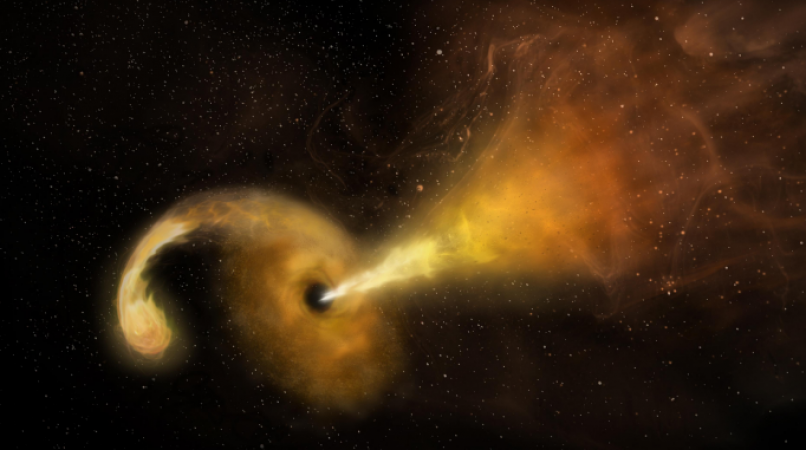
USA: The closest pair of supermassive black holes detected at different wavelengths were two that were discovered near a galaxy merger.
The researchers found that the black holes close to the nucleus of the new galaxy, known as UGC 4211, were expanding simultaneously. The remnants of the galactic merger were being devoured by the "super-hungry giants", which are located 750 light-years away.
Galactic merger-formed binary black holes may be common and therefore challenging to observe in remote regions of the universe. Researchers were taken aback by the discovery of two black holes "dining side-by-side" close to merging galaxies.
Also Read: Emoji reactions have been added to Google Meet, and a 360-degree background feature is forthcoming
The Atacama Large Millimeter/submillimeter Array (ALMA), a global observatory in Chile, was used to find the black hole. With a very high spatial resolution and the ability to observe objects simultaneously, this observatory can see through "large columns of gas and dust". The two galaxies, located 500 million light-years from Earth in the constellation Cancer, are in the final stages of a merger.
As one of the closest pairs of black holes to galaxy mergers, the pair discovered by our study may be even more common than previously thought, according to Michael Koss, lead author of the study.
Mergers of galaxies are known to occur more frequently in distant regions of the universe. He continued by saying that using ALMA was "game-changing".
Also Read: The same size of super-Earths is explained by a new theory
Data from the Chandra X-ray Observatory, the Hubble Space Telescope, and ESO's Very Large Telescope were combined with multi-wavelength observations from ALMA.
The entire merging galaxy was visible using optical imaging from the ground, while Hubble's high-resolution images of the nuclear regions. Meanwhile, X-ray observations revealed that the system contains at least one active galactic nucleus.
Scientists have mainly focused their research up to this point on the early stages of galaxy mergers. The most recent study may help us understand the interactions between the Andromeda galaxy and our own Milky Way galaxy.
Also Read: NASA's TESS telescope discovers a potential Earth-size exoplanet that is habitable
According to Koss, the Milky Way–Andromeda collision is still in its early stages and is expected to occur in about 4.5 billion years.
"What we've just studied is a source in the final stages of the collision, so what we're seeing anticipates the merger and gives us insight into the relationship between black hole mergers and accretion and ultimately the production of gravitational waves." " Told.